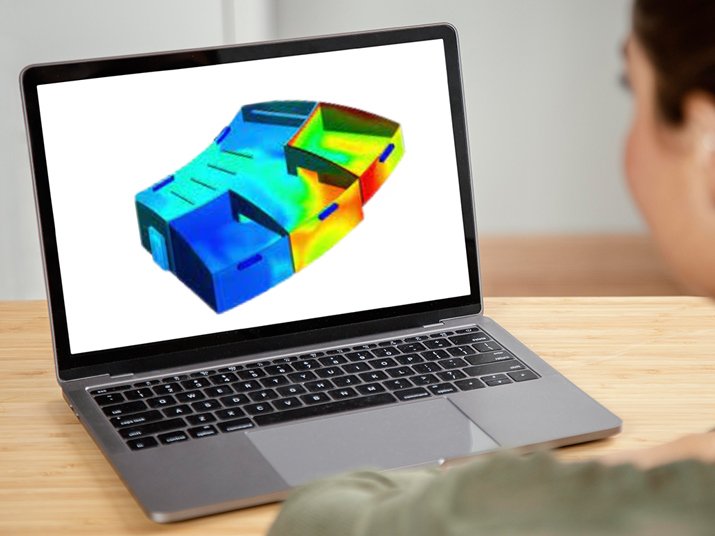CFD (Computational Fluid Dynamics) analysis has been used extensively for HVAC (Heating, Ventilation, and Air Conditioning) applications in construction projects for decades now. It’s been found that with CFD analysis, you can have energy efficiency savings in the heating systems of a building by optimizing the location and size of vents or fans.
For example, CFD analysis can help you find out if your air conditioning system can handle summer temperatures or not by analyzing its efficiency before you spend money on it.
How CFD Analysis for HVAC Benefits the Construction Industry

CFD analysis for HVAC is a computer simulation technique for analyzing the flow of gases and heat transfer between components inside an HVAC system. CFD analysis for HVAC has been around for over 30 years but has not been widely adopted by the industry until recently.
CFD analysis is basically a simulation technique used to analyze the flow of fluids in a wide range of applications. It can be used to analyze the flow of air and water through pipes, heat transfer between surfaces, and many other industrial applications.
The benefits of CFD analysis for HVAC are many: it can save time, money, and materials while improving safety.
What Are the Top 4 Uses of CFD Analysis in HVAC Applications in Construction?
CFD analysis for HVAC is used for applications in construction to mainly achieve the following four objectives:
1) Designing a Building’s Heating and Cooling System
This is one of the most critical aspects of constructing a new building. CFD analysis for HVAC applications in construction can create an efficient design for the building’s heating and cooling system, ensuring it meets all necessary standards for sustainability, health regulations, and cost-effectiveness.
2) Determining the Airtightness of Different Wall Assembly Designs
CFD analysis for HVAC measures the flow of air in, around, and out of buildings to determine heat loss from a building. Engineers do this by modeling airflow and predicting its effects with computational fluid dynamics simulations.
3) Assessing the Performance of Different Ductwork Configurations
Ductwork is an integral part of any HVAC system, and its configuration is a crucial decision that can drastically affect building performance. Using CFD analysis for HVAC, different simulations are run in full-scale models with computational grids representing a set of different configurations to be analyzed.
CFD analysis revealed the best configuration for each of the tested systems, which helps reduce cost and improve building performance by determining the configuration for optimized performance.
4) Evaluating the Performance of a Building’s Ventilation System
CFD is often used in the design and analysis of airflow through buildings. It provides computational tools to the engineer for predicting how air will move in models of buildings or other structures. These predictions are based on some basic assumptions, such as gas laws, Bernoulli’s principle, and the incompressibility of fluids.
CFD analysis for HVAC starts with analyzing buildings’ ventilation systems and determining the flow rate through each opening. These flow rates are then used to calculate the amount of air exhausted from the building. The next step is to use the CFD analysis to determine how much ventilation will be needed by calculating the amount of air required to flow in each direction. Engineers can calculate the amount of heat absorbed from outdoor air during winter and cooled outdoor air during summer to assess the energy efficiency of any given building with the help of CFD.
CFD Analysis, a Builder’s Best Friend to Save Time & Money
CFD analysis has been used in the construction industry since the early 1980s. It is a 3D modeling technique that uses computational fluid dynamics to simulate how air flows through an object or system. It can analyze buildings’ heating, cooling, ventilation, and other HVAC systems and mechanical equipment such as fans, pumps, compressors, or turbines.
CFD analysis for HVAC has applications in many different areas of the construction industry, including:
-
Building Design
-
Building Commissioning
-
Building Operations
-
Energy Efficiency Measurement & Verification
-
Indoor Air Quality Assessment
-
Ventilation System
The construction industry is one of the most competitive industries in the world because it is so time-sensitive without any other way to measure or analyze its designs for performance parameters except for CFD analysis. With CFD, you can save as much as 80% in design time and 60% in design costs.
It is easy to use CFD analysis for HVAC analysis because it doesn’t require expensive equipment or software like other engineering tools. So it’s not only easy to use but also very affordable.
CFD analysis has become an essential part of the design process for construction professionals and helps them make smarter decisions about their building designs by predicting airflow, temperature, and pressure. This saves time and helps them save money by avoiding costly mistakes.
Use CFD Analysis for HVAC to Supercharge Your Project
A CFD analysis tool is software that uses Computational Fluid Dynamics (CFD) to compute airflow in a room or building and can optimize the air distribution & control the HVAC system for better results.
The benefits of using a CFD analysis tool are:
-
It improves comfort levels by reducing temperature variations and improving airflow
-
It reduces energy consumption by up to 15%
-
It helps you save on cooling and heating costs
Mechartes CFD Services for HVAC can provide you with a greater level of comfort and improve the efficiency of your design. Time and effort are precious resources, and our CFD experts, designers, and engineers are here to help you maximize them.
Mechartes has provided various CFD services related to data centers and HVAC systems. Get in touch with us today to know more about our services and how we’ll be of your service.


 Share
Share  facebook
facebook